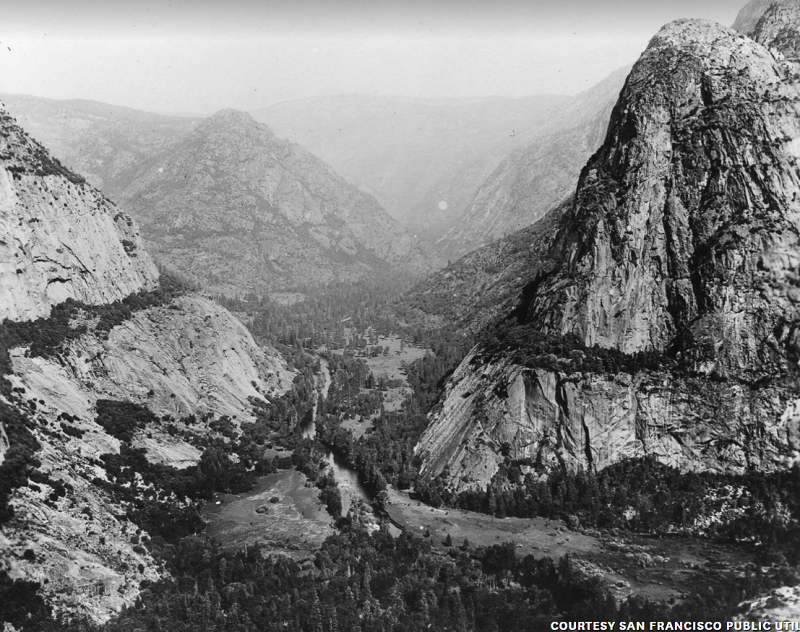In his Pulitzer Prize winning series, Sacramento Bee editor Tom Philp opined “Californians don’t have to be prisoners of a 90-year-old debate. Change is coming to the river.”
Looking to the future, not dwelling on the past, is what Restore Hetch Hetchy is about. Water agencies through California have made investments to assure reliable supplies while lessening impact on rivers and wetlands (e.g. Mono Lake, the Bay-Delta, Central Valley wildlife refuges and Trinity River).
With a sense of the past but without a vision for the future, on December 3 the San Francisco Chronicle published archival photos in a short article titled “How Hetch Hetchy Valley Went from Natural Paradise to Concrete Basin“.


“…the scenic canyon was often compared to nearby Yosemite Valley. Rare photos show the transformation of Hetch Hetchy Valley from untouched paradise …”
It’s great to have the Chronicle acknowledge the spectacular landscape that Hetch Hetchy once was. We invite the Chron, and all San Franciscans, to think about Hetch Hetchy’s future as a valley once more.
We’d also love other newspapers endorse restoration as the Sacramento Bee has. The Los Angeles Times has not (yet) but they did publish the following letter last Friday:
Letters to the Editor: Relieve the strain on Yosemite Valley. Drain Hetch Hetchy
To the editor: Yosemite Valley is too crowded? Then create a second Yosemite Valley. (“Yosemite has been at its best under pandemic restrictions. Keep the cap on crowds,” Opinion, Dec. 6)
Amazingly, it already exists at Hetch Hetchy, John Muir’s preferred valley in the national park. But it currently serves as a reservoir for San Francisco and is full of water.
Now is the time to empty it. There is more than enough unused reservoir space in California to accommodate all of that water and continue to serve San Francisco without any problem.
Just pull the plug and get to work restoring Hetch Hetchy to what it should be — another Yosemite Valley full of wonders.
William Bergmann, Hollywood
Thanks to Mr. Bergman for writing a great letter and to the Los Angeles Times for publishing. Let’s not be prisoners of the past.
